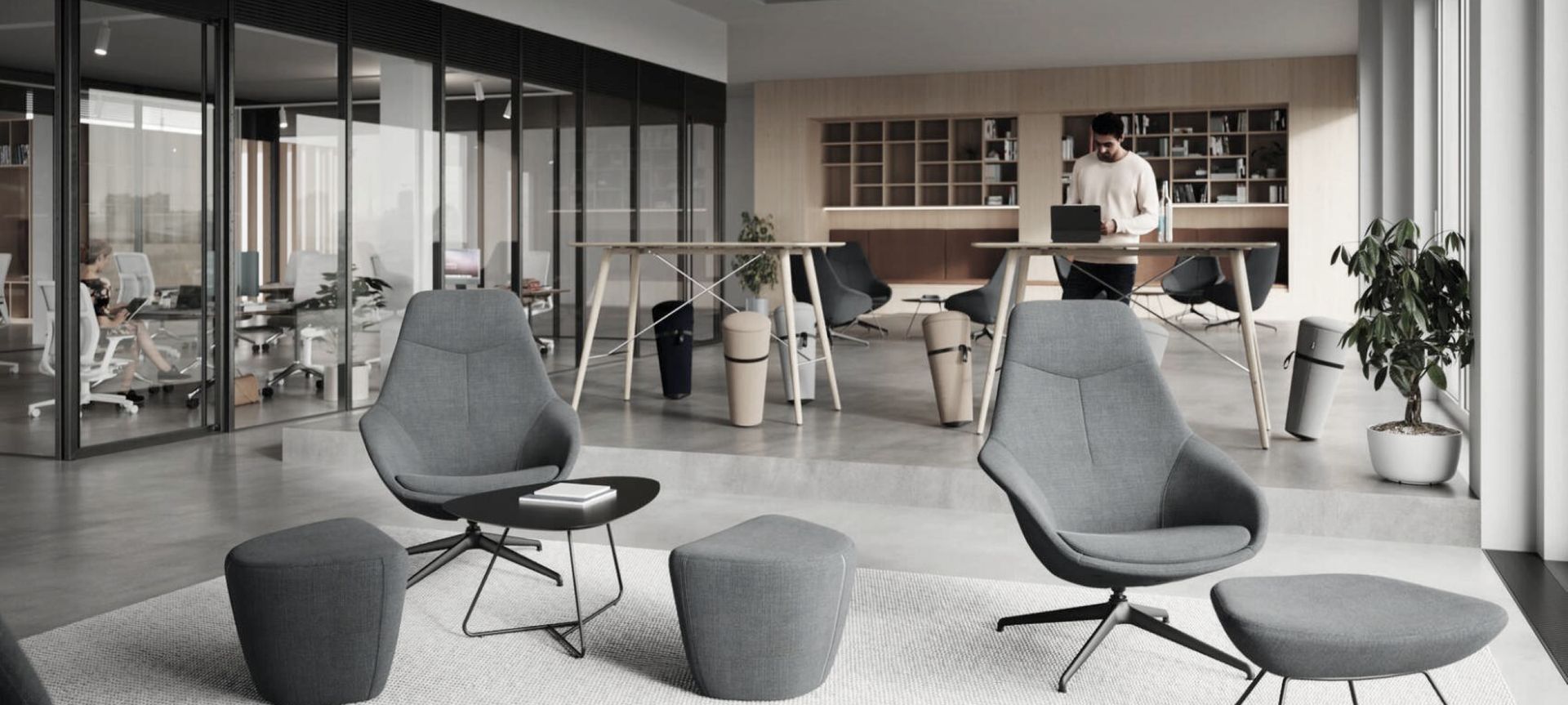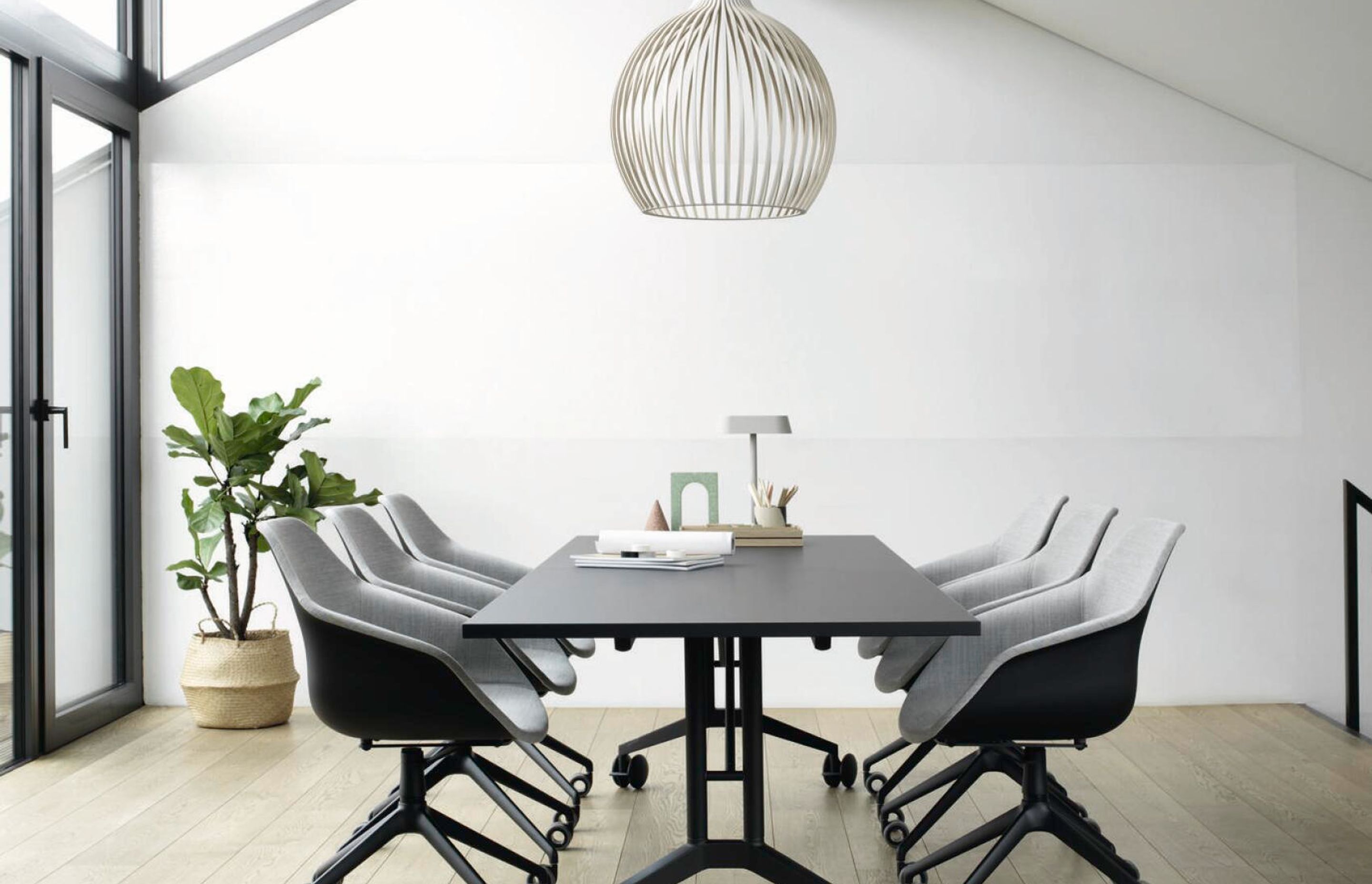A company creating human-centric spaces with ergonomic office furniture
Written by
11 June 2023
•
4 min read

Sitting has become second nature to us. Whether we’re at home or work, or travelling in between, our tendency as humans is to take a seat. It’s a relatively new phenomenon: only 125 years ago a human being would have been active and upright for 10-12 hours per day. That has shrunk to just 25 minutes a day in the past 20 years, when we have succumbed to sitting at a computer screen, with most things we need within easy reach.
In fact, over the past few years, with the advent of digitalisation and its tools, movement has been reduced to our fingers through two-dimensional desktops and touchscreen display – with serious consequences for our health. According to German healthcare insurer DAK’s 2018 Health Report, 75% of all employees have backache at least once a year and one in seven has already suffered from it for three months or more. Backache is clearly no longer the result of overtaxing our bodies but of lack of muscular stimulation.
Premium furniture manufacturer Wilkhahn has long recognised the need for ergonomic furniture, and was one of the first ever office furniture makers to create furniture that moves with the body in the 1970s.
“This was at a time when businesses were establishing offices and desk jobs were really starting to become more and more prevalent,” says Wilkhahn’s Triny Arya-Pinatyh. “Wilkhahn developed one of the first office ‘task’ chairs, which had a synchro-adjustment mechanism that meant it would move while that person was sitting in it.”

Wilkhahn has a history of being at the cutting edge of contemporary design, having been established over 100 years ago in Germany, and an early adopter of the Bauhaus school of thought, where function is equally as important as form.
Since then, the premium furniture company has developed functional, sustainable, durable and aesthetically timeless furniture, and it has become a leader in studying and creating “human-centred” workplaces.
This knowledge is now more important than ever, as so many businesses struggle to come to terms with a workforce that is operating on a hybrid model, between home and the office.
“Right now, businesses are asking, ‘How do we get people back to work? How do we utilise our office real estate effectively?’”says Triny.
The idea of a 24-hour office that can be used as an office during the day and an event space or for another use in the evening is becoming more and more popular.
“That's when you need flexible furniture that can change from a meeting room, into a set of workstations and then into a training room – whatever you need it to be to cater for different activities throughout the day.”
Wilkhahn has answered this by innovating in this space, with a number of products that can be adapted for different uses and office set-ups. Their range include desks and tables that can be easily reconfigured to create meeting, socialising and working spaces.
But human-centred workspaces are not just about flexibility, they’re about creating healthy and inviting environments that attract talent and boost productivity and innovation.
Research on innovation shows over 80% of innovations result from people interacting, often spontaneously with each other, and this requires an environment that facilitates trust.
Wilkhahn’s human-centred workplace concept does exactly that. It prioritises an integrative approach that takes into account well-being, collaboration, identity and purpose. If employees are stimulated and feel appreciated, it makes them happier at work and healthier overall.
In terms of spatial design, this means navigating the workspace should encourage employees to repeatedly bump into one another at particular points. It also means the backdrop to their workspace should be diverse and stimulating, to encourage interaction again and again.
Wilkhahn’s furniture features materials and colours that were devised to create points of reference, trust and reassurance through attractive design and optimum functionality, thereby facilitating those points of contact and conviviality between staff.
This holistic approach to office furniture and spatial design in the workspace means Wilkhahn has established itself as a leader in the industry.
“Wilkhahn is known for its pioneering mentality – it’s a company that has endured in spite of global challenges and that’s down to its focus on creating products that are beautiful, timeless, sustainable and are centred around the people that use them.”
Discover beautiful furniture by Wilkhahn